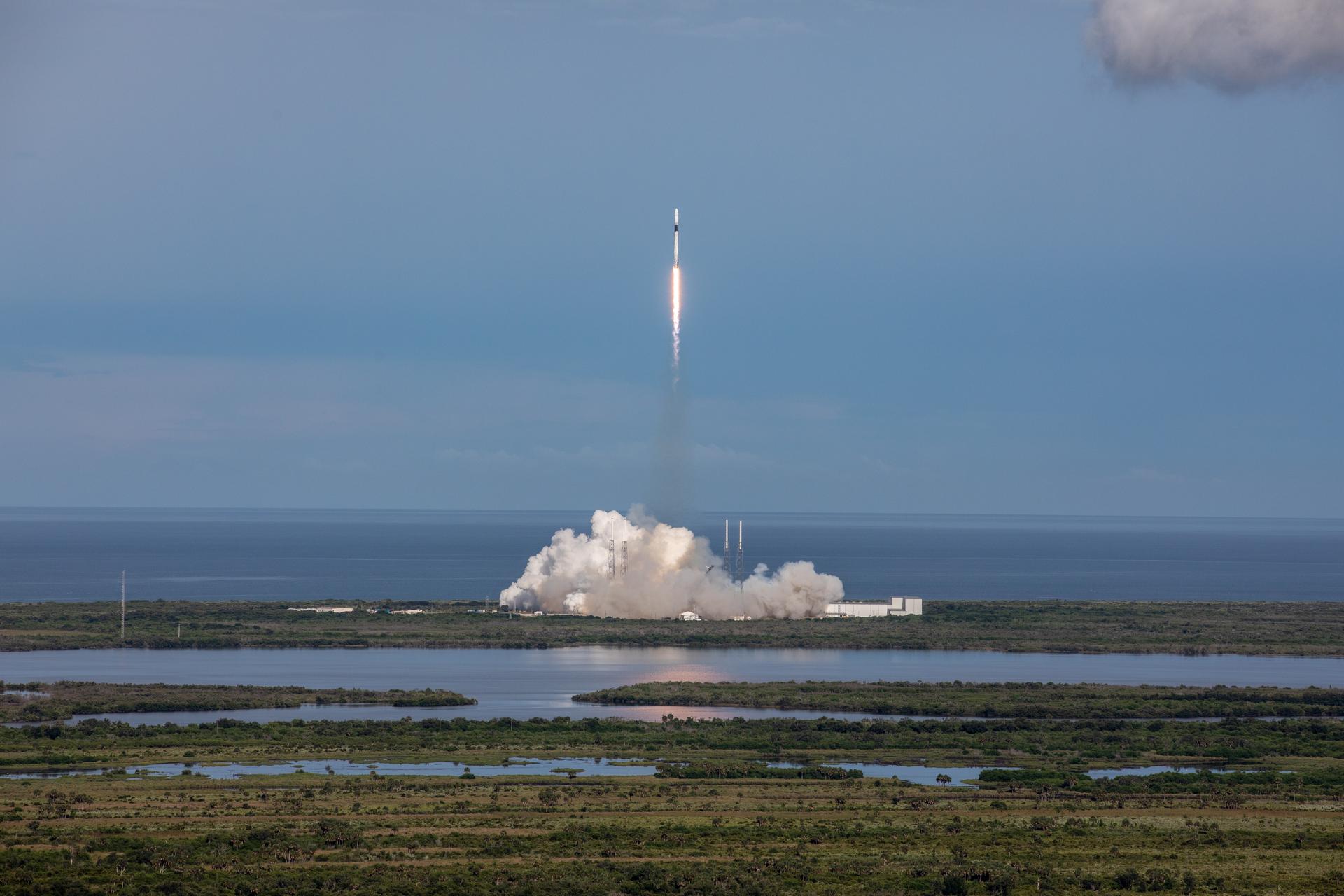Editor’s note: An update to this story, NASA to Broadcast Next Space Station Resupply Launch, Prelaunch Activities, was published on Dec. 4, 2019: The Dec. 4 launch attempt has been scrubbed due to winds. The next launch opportunity will be at 12:29 p.m. EST on Thursday, Dec. 5. Launch coverage for the SpaceX CRS-19 mission to the International Space Station will begin at 12 p.m. EST on NASA Television and the agency’s website. A launch of the SpaceX cargo Dragon spacecraft on Thursday will result in its arrival at the space station on Sunday, Dec. 8.

NASA commercial cargo provider SpaceX is targeting 12:51 p.m. EST Wednesday, Dec. 4, for the launch of its 19th resupply mission to the International Space Station under contract with the agency. Live coverage will begin on NASA Television and the agency’s website Tuesday, Dec. 3, with prelaunch events.
The Dragon spacecraft, which will launch from Space Launch Complex 40 at Cape Canaveral Air Force Station in Florida, will be filled with supplies and payloads, including critical materials to directly support dozens of the more than 250 science investigations and technology demonstrations that will occur during Expeditions 61 and 62.
About 10 minutes after launch, Dragon will reach its preliminary orbit. It will then deploy its solar arrays and begin a carefully choreographed series of thruster firings to reach the space station. When it arrives at the station Dec. 7, Expedition 61 Commander Luca Parmitano of ESA (European Space Agency) will grapple Dragon with NASA astronaut Andrew Morgan acting as a backup. NASA’s Jessica Meir will assist the duo by monitoring telemetry during Dragon’s approach. The station crew will monitor Dragon vehicle functions during rendezvous. After Dragon’s capture, mission control in Houston will send commands for the station’s arm to rotate and install it on the bottom of the station’s Harmony Earth-facing port.
Full mission coverage is as follows (all times Eastern):
Tuesday, Dec. 3
- 1:30 p.m. – NASA Social, What’s on Board science briefing from NASA’s Kennedy Space Center. This briefing will highlight the following research:
- Bryan Dansberry, assistant program scientist for NASA’s International Space Station Program Science Office, will share an overview of the research being conducted aboard the space station and how it benefits exploration and humanity.
- Michael Roberts, interim chief scientist for the International Space Station U.S. National Laboratory, will discuss the lab’s work in advancing science in space and developing partnerships that drive industrialization through microgravity research.
- Ya-Ting Liao and Paul Ferkul, investigators for the Confined Combustion experiment, will discuss the investigation which studies how fire spreads and behaves in confined spaces.
- Andres Martinez, principal investigator and a student participant for AzTechSat-1, the first Mexican-developed nanosatellite to be launched from the space station, will discuss how the investigation will demonstrate communication between a CubeSat and the GlobalStar Constellation satellite network in low-Earth orbit.
- Akira Iwasaki, professor at the University of Tokyo and principal investigator for the Hyperspectral Imager Suite (HISUI), will discuss the next-generation, hyperspectral Earth imaging system that was developed by the Japanese government.
- Se-Jin Lee, professor at the Jackson Laboratory and University of Connecticut School of Medicine, and principal investigator of Rodent Research-19, and Emily Germain-Lee, professor at the University of Connecticut School of Medicine and chief of endocrinology and diabetes, Connecticut Children’s Medical Center, will discuss research on molecular signaling pathways that influence muscle degradation to prevent skeletal muscle and bone loss during spaceflight, and enhance recovery following return to Earth.
- 4 p.m. – Prelaunch news conference from Kennedy with representatives from NASA’s International Space Station Program, SpaceX and the U.S. Air Force’s 45th Space Wing. Participants include:
- Kenny Todd, manager, International Space Station Operations Integration at NASA
- Bryan Dansberry, assistant program scientist, International Space Station Program Science Office at NASA
- Jessica Jensen, director, Dragon Mission Management at SpaceX
- Mike McAleenan, launch weather officer, U.S. Air Force 45th Space Wing
Wednesday, Dec. 4
- 12:30 p.m. – NASA TV launch coverage begins for the 12:51 p.m. launch.
Saturday, Dec. 7
- 4:30 a.m. – Dragon rendezvous, grapple and attaching to the station. Capture is scheduled for approximately 6 a.m.
- 8:00 a.m. – Dragon installation to the nadir port of the Harmony module of the station
Dragon will remain at the space station until Jan. 4, when the spacecraft will return to Earth with research and return cargo.
The deadline for media to apply for accreditation for this launch has passed, but general information about media accreditation is available by emailing ksc-media-accreditat@mail.nasa.gov.
For the latest schedule of prelaunch briefings, events and NASA TV coverage, visit:
Learn more about the SpaceX resupply mission at:
-end-
Kathryn Hambleton
Headquarters, Washington
202-358-1100
kathryn.hambleton@nasa.gov
Mary MacLaughlin / Kenna Pell
Kennedy Space Center, Fla.
321-867-2468
mary.maclaughlin@nasa.gov / kenna.m.pell@nasa.gov




























